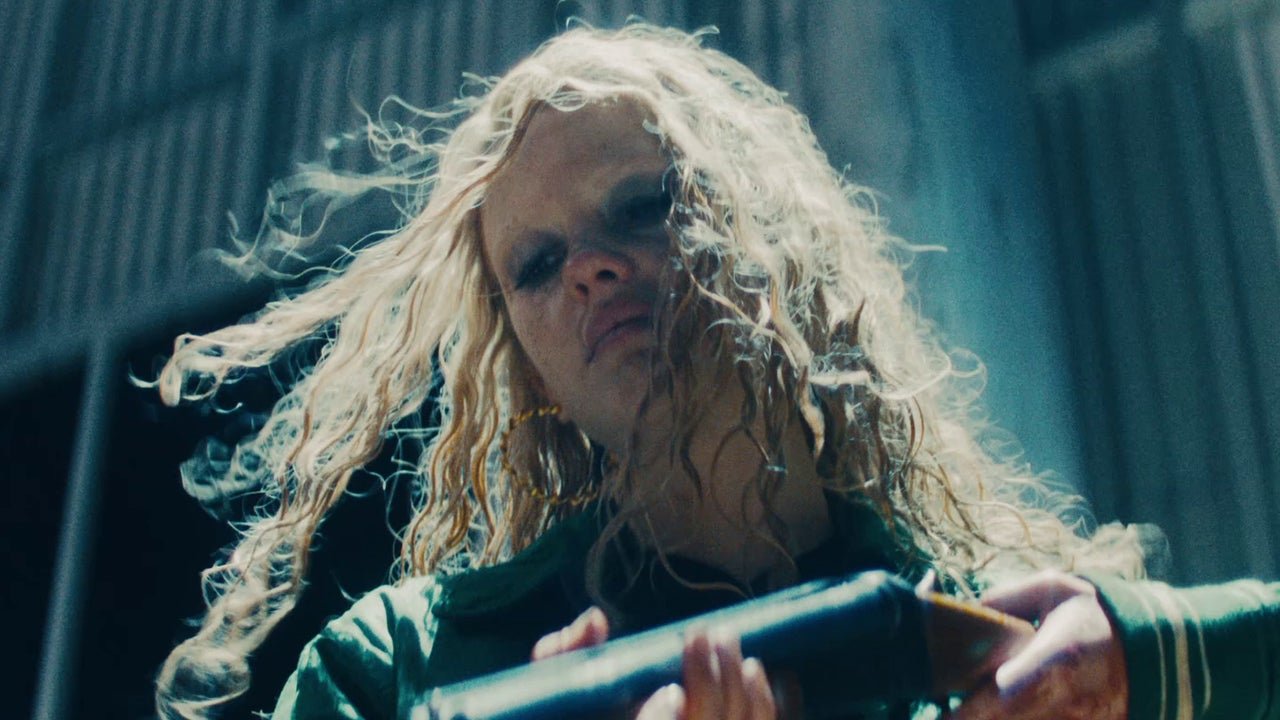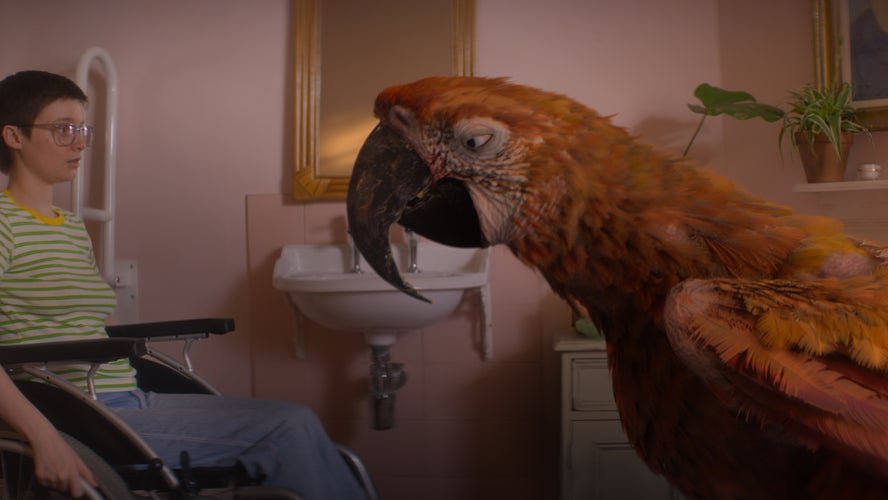ROBOT DREAMS
Directing: A
Acting: B
Writing: A
Cinematography: A
Editing: A
Animation: A-
Robot Dreams is an utterly delightful, adorable animated feature without any dialogue and with an undercurrent of melancholy. It’s about friendship, love, and a meditation on the transient nature of relationships. It’s uniquely lush in spite of being almost exclusively set in cityscapes, with dark lines around rounded shapes filled with vividly solid colors that somehow combine to create a visual warmth.
Everything about it invites and envelopes you, even as the story takes unexpected turns. This is a universe filled with anthropomorphized animal characters, packed with endlessly charming visual details. “Dog,” the protagonist, wags his little tail any time something makes him happy or excited. He reads a copy of Stephen King’s Pet Sematary when he crawls into bed at night, making us wonder what a society of animals keeps as pets (which we never do actually see).
I am certain I could watch this movie again and discover many charming details I missed the first time around. One of my favorites is when Dog and Robot take a row boat ride in a lake, amongst many others doing the same. One other boat with two companions contains an elephant and a mouse, the elephant weighing down one end of the boat so heavily that the mouse is pushed high into the air at the other end.
But I’m getting ahead of myself. “Robot” is our other main character, a companion Dog has ordered through the mail via a number provided in a television ad. “Are you alone?” the ad copy onscreen reads, and we have already gleaned that Dog is lonely. This was where I first noticed the penchant for background detail in Robot Dreams, actually: as Dog eats his TV dinner alone in his apartment, we can see through his window and again through the window of an apartment across the street, an affectionate couple (a cow and a giraffe, if I remember right) snuggling on a couch in front of their own TV, feeding each other popcorn.
These are details we, as viewers of the movie, notice first. But then Dog notices, and he longs for something of the same in his own life. Enter Robot, who never exists as a character to provoke any thoughts about robotics or AI or anything particularly science-fiction in tone or theme. He’s more like a platonic mail-order bride, and in the end he doesn’t even have any particular personality defects that might cause tension in Dog and Robot’s relationsip. In the end, it’s more about how things can change even between people who never love each other less, but due to circumstances beyond their control. It’s the unhappy accidents of life itself that get in the way.
Robot Dreams is an unrated film, but if it were to get an MPA rating, logically it would get at least PG—not because of vulgarity or violence, which this film really has none of whatsoever, but just because it could be a bit sad for small children. There’s a moment in Robot’s journey, something that happens to him, that broke my heart. And I’m 48 years old.
Well before that, though, we just watch an extended sequence of scenes with Dog and Robot’s blossoming relationship. They walk to the park, go roller skating, and go to the beach. This goes on long enough that I found myself wondering how and when some kind of conflict will enter the story, as there is no story without one. And this is one of the many great things about Robot Dreams: it checks off the obligatory story beats, but always in unexpected ways. In this instance, Dog and Robot get separated at the beach because neither of them realized Robot would rust if he went swimming. He is rusted frozen on the sand, too heavy for Dog to drag away after they have napped clear through evening, and the door through the fence barrier to the beach not only closes at the end of the day, but until the next spring! Dog is dragged away by a cop for trespassing, given no chance to try and repair and retrieve Robot, who then spends the entire winter under snow and ice, quite literally dreaming of ways he might get reunited with Dog (hence the film’s title).
Dog marks the date he can go back (June 1), but in the meantime is forced to go on with his life. He’s still lonely, he tries to make friends, with varying but never complete success. By the time June 1 actually comes around, circumstances have changed significantly for both of them. I won’t spoil it except to assure that Robot does not stay stuck in the sand forever, and this is actually part of their diverging fates that take Robot Dreams to its surprisingly bittersweet conclusion. It’s not often that a film ends with its characters not unhappy, but perhaps fated with a lifetime of wistful yearning for what could have been.
Through all of it, the story is told almost exclusively in a visual manner, the closest to any dialogue being characters snickering or hollering out, “Hey!” I suppose you could say Robot Dreams thus features “voice acting,” although not in a way that particularly showcases anyone’s talent. The story and the animation are what make this the wonderful movie that it is, along with the soundtrack: the only time we hear actual words being vocalized is in song, tunes played on the soundtrack or from a character playing a cassette tape.
Director and co-writer Pablo Berger sets the story in 1980s New York, a plainly deliberate choice that adds to the nostalgic tone. Everything seen onscreen is a celebration of what we see, right down to the teenage animal punks who flip off Robot as he walks by them (oh wait, I guess that one moment could be seen as a “vulgarity,” even though even that plays with charm). Many shots feature the twin towers of the old World Trade Center in the background, always lovingly rendered, just like everything else we see onscreen. This is a movie that loves New York, and all of the characters in it. It loves Dog and it loves Robot, and it loves all the characters they meet along their respective journeys. It loves the art of storytelling and it loves animation in all its forms, and perhaps most of all, it loves us: the people watching the movie.
Robot and Dog swim in a sea of innovative storytelling devices.
Overall: A










